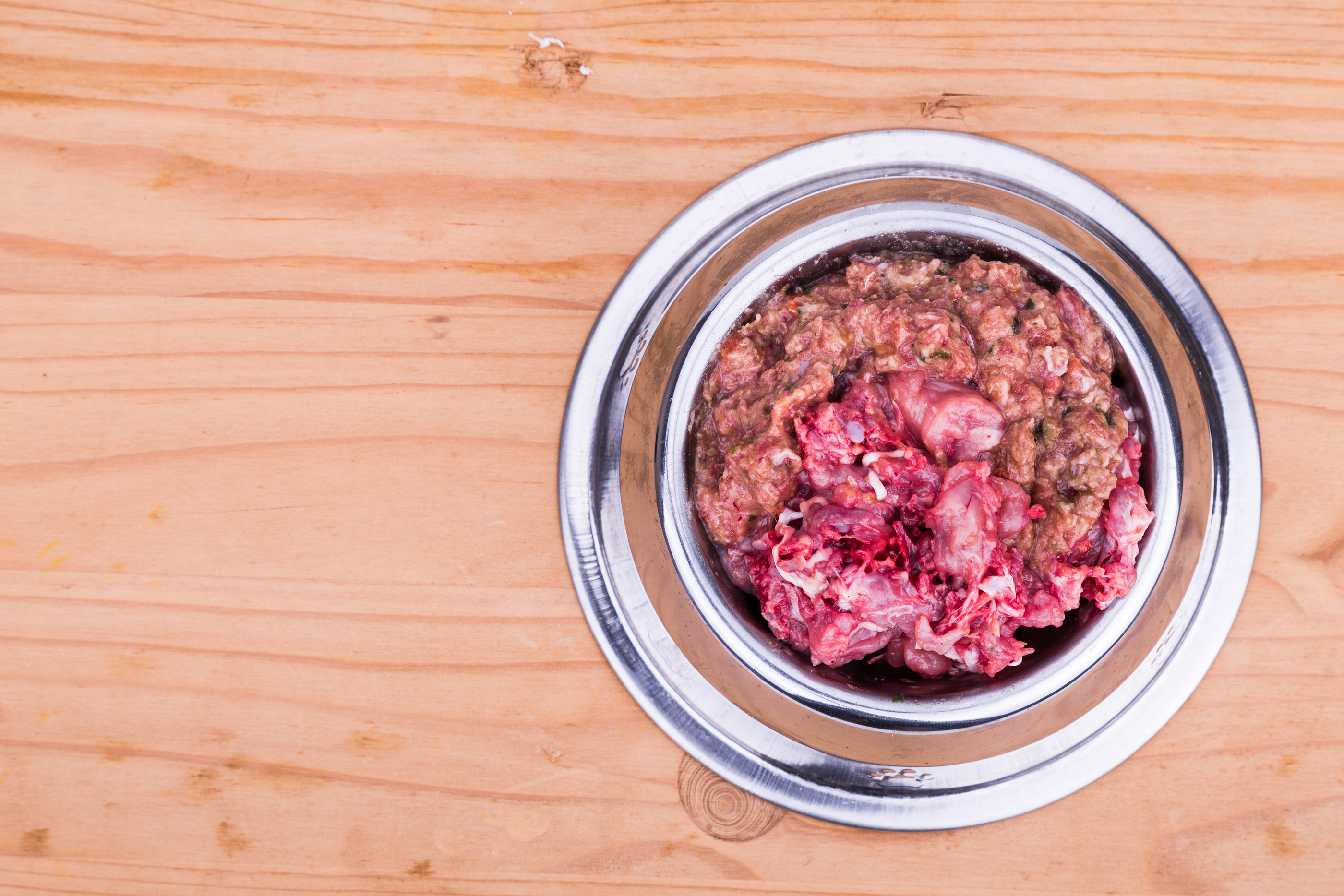

The idea of providing your dog with a raw dog food diet has been a controversial topic. However, the popularity of the raw dog food diet is rising. What is the benefit of providing your dog with raw food? Are there any drawbacks?
Many types of racing and sled dogs have eaten raw food diets for many years now. The idea of extending that into the family pet sector is a more recent idea proposed by Australian veterinarian Ian Billinghurst. His raw dog food diet suggestion was labeled the BARF (Bones and Raw Food, or Biologically Appropriate Raw Food) diet. The idea behind the raw dog food diet is relatively straightforward. Billinghurst and other veterinarians suggest that dogs would thrive on a diet that is similar to what they were eating before they were domesticated. This would include raw meat, bones, and vegetable scraps. Billinghurst and others argue that the grain-based commercial foods are detrimental to a dog’s overall quality of life. However, many mainstream veterinarians, as well as the FDA, have published several studies that don’t recommend the usage of a raw dog food diet.
The Benefits
The raw dog food diet seems to be a more natural food source than the typical pet-food found at supermarkets. A raw dog food diet will usually consist of muscle meat, bones, organ meats, raw eggs, vegetables, fruits, and some dairy products such as yogurt.
Dog owners claim a lot of cosmetic and psychological benefits for their pets. This includes shinier coats, healthier skin, cleaner teeth, and higher energy levels. The raw meat and bones provide the dog with lean and strong muscles, due to the high amounts of protein present in the food. Chewing these raw products also helps your dog maintain healthy teeth and gums. The natural fatty acids and oils provide your dog with healthy skin and a shiny coat. All of these raw, natural whole food ingredients allows for maximum digestibility, promoting higher levels of energy for your pet.
The Criticisms
As mentioned before, many mainstream veterinarians have criticized the use of a raw dog food diet. They claim that the potential risks outweigh the positives associated with the diet. The potential risks they mention is the exposure to bacteria present in the raw meat, an unbalanced diet that may damage the health of dogs over a period of time, and the risk for dogs to choke on the whole bones, or potentially break their teeth.
The concern over bacteria contamination has some validity. A 2006 study found that out of 20 commercially available raw dog food diets, 7.1% contained a type of salmonella, and 59.6% contained the dreaded E. coli bacteria. On top of this, bacteria can be spread through the feces of the animal, potentially putting you at risk of exposure and infection.
However, supporters of the raw dog food diet have stated that these concerns are overblown. They are quick to point out that commercially processed pet food can contain harmful bacteria just like its raw food counterpart. They argue that feeding your dog a raw meat diet is no different than cooking chicken for your family. As long as you clean up the counter and your knife, there will be no spread of infectious bacteria.
What Do You Think?
With all that being said, what do you think the best diet is for your dog? Are you willing to give the raw dog food diet a shot? Companies such as Nature’s Variety have come up with Instinct, a raw dog food that presents all-natural, high-quality ingredients for your pet. It may be something worth trying out if you’re interested. If you’re looking for more information on raw dog food brands, and any other types of dog food, please visit our website. The team at Dog Food Insider has created in-depth reviews on each dog food brand and provides recommendations on what dog food is the best for your pet. We also provide tips on overall dog-care, and up-to-date information on dog food recalls. We take pride in our knowledge of dog care. Please visit us today!
